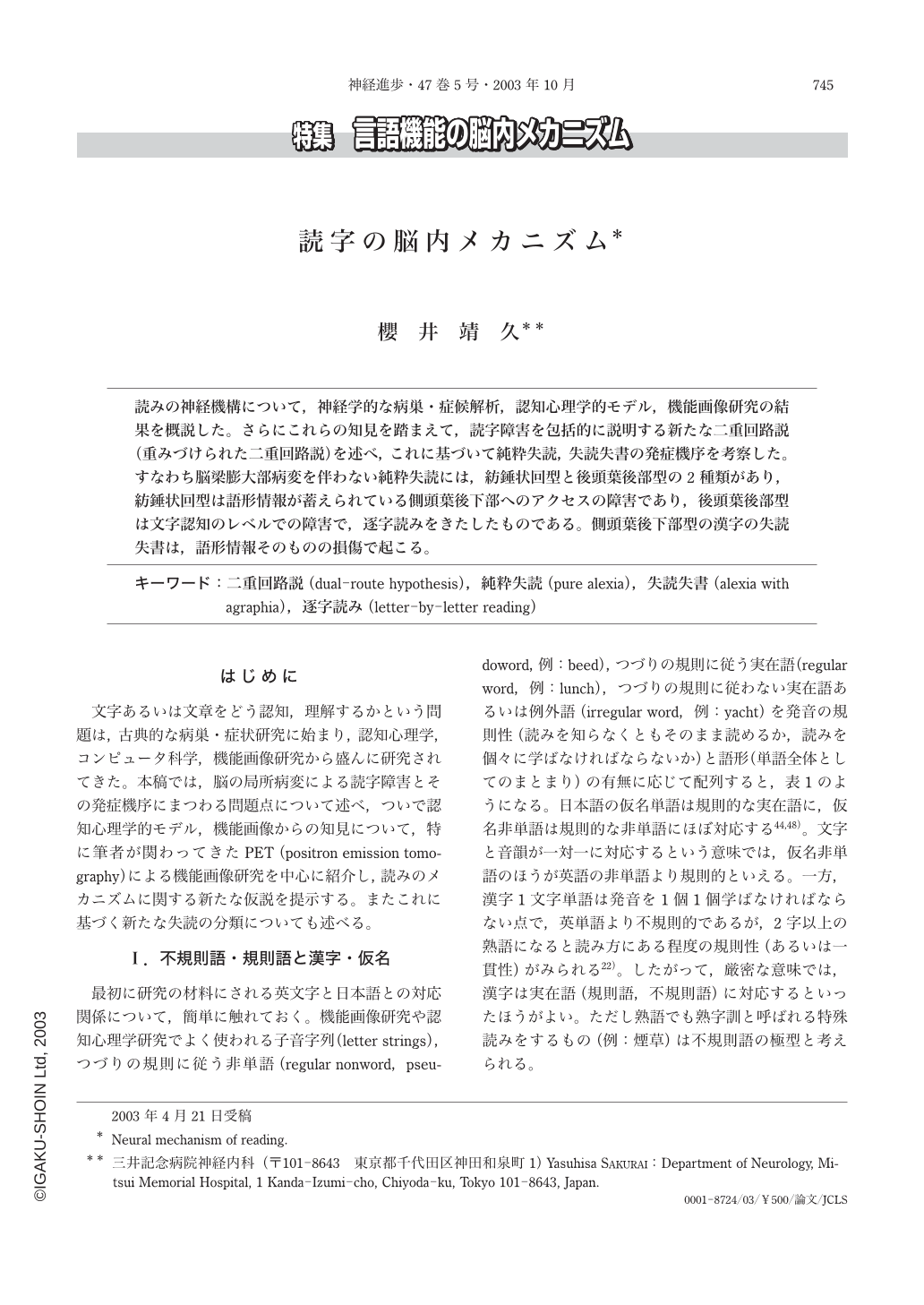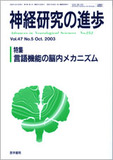Japanese
English
- 有料閲覧
- Abstract 文献概要
- 1ページ目 Look Inside
読みの神経機構について,神経学的な病巣・症候解析,認知心理学的モデル,機能画像研究の結果を概説した。さらにこれらの知見を踏まえて,読字障害を包括的に説明する新たな二重回路説(重みづけられた二重回路説)を述べ,これに基づいて純粋失読,失読失書の発症機序を考察した。すなわち脳梁膨大部病変を伴わない純粋失読には,紡錘状回型と後頭葉後部型の2種類があり,紡錘状回型は語形情報が蓄えられている側頭葉後下部へのアクセスの障害であり,後頭葉後部型は文字認知のレベルでの障害で,逐字読みをきたしたものである。側頭葉後下部型の漢字の失読失書は,語形情報そのものの損傷で起こる。
はじめに
文字あるいは文章をどう認知,理解するかという問題は,古典的な病巣・症状研究に始まり,認知心理学,コンピュータ科学,機能画像研究から盛んに研究されてきた。本稿では,脳の局所病変による読字障害とその発症機序にまつわる問題点について述べ,ついで認知心理学的モデル,機能画像からの知見について,特に筆者が関わってきたPET(positron emission tomography)による機能画像研究を中心に紹介し,読みのメカニズムに関する新たな仮説を提示する。またこれに基づく新たな失読の分類についても述べる。
Neural mechanism of reading was reviewed with special reference to neurological lesion-to-symptom analyses, a cognitive neuropsychological model, and neuroimaging studies. To account for the findings of these studies, a weighted-dual route hypothesis for reading was proposed. According to this hypothesis, pure alexia without a splenial lesion is classified into the fusiform type and the posterior occipital type:the fusiform type is an impairment of access to the orthographic information that is stored in the posterior inferior temporal cortex, whereas the posterior occipital type is an impairment at the level of character recognition, leading to letter-by-letter reading. Alexia with agraphia for kanji from the posterior inferior temporal lesion results from damage to the orthography per se.

Copyright © 2003, Igaku-Shoin Ltd. All rights reserved.


